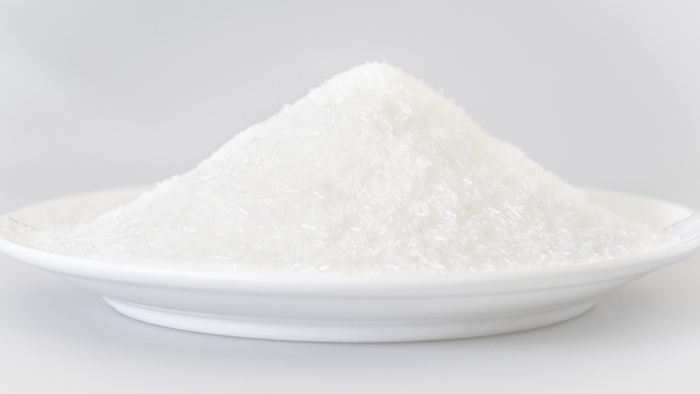
I remember quite a few years ago my uncle coming over, and we ordered Chinese food. He asked for it to be free of MSG. “What’s MSG?” I thought at the time.
Let me introduce you to MSG or monosodium glutamate. You may know it as a simple flavor enhancer. It’s the sodium salt of glutamic acid which can be found in many proteins. It’s a familiar taste and it doesn’t do you any harm, as far as you know.
According to the U.S. Food and Drug Administration (FDA), MSG is on the GRAS list (generally recognized as safe). But what are some known consequences of MSG? Many people are sensitive to MSG. It can cause headaches, agitation, numbness, tingling muscles or skin, tightness in the chest and an increased heart rate. It’s also been linked to obesity, hypertension, Alzheimer’s, and disorders of the brain, nervous system and reproductive system. So much for generally recognized as safe.
Some restaurants avoid the ingredient; however, Chinese food isn’t the only place you’ll find MSG. It is in many processed foods, including gravy, soy sauce, flavored snack chips, cold cuts, canned soups, chewing gum, candy, protein bars, baby formula and many other food items.
Where Does MSG Hide?
Will the real MSG please stand up? MSG is hidden in most processed foods. When I say hidden, I mean you often won’t see the words “monosodium glutamate” on the food label. Here are some of the most common names that MSG is disguised by.
1. Whey Protein Concentrate or Whey Protein
It may contain MSG and genetically modified bacteria. Whey and whey protein concentrate can be found in protein powders, ice cream, cereals, candies and baked goods.
2. Protein
When protein is an ingredient on a food label, look out for MSG. This will take form typically as protein concentrates, protein fortified or protein isolates. Some protein powders and supplements may also contain MSG.
3. Carrageenan
Carrageenan is a seaweed preservative, which is used as a natural stabilizer in non-dairy milks, ice cream, cream cheese, evaporated milk, puddings and chocolate milk. It may also contain MSG.
4. Glutamic Acid or Glutamate
Glutamic acid is a non-essential amino acid. When you find it in anything processed, it contains free glutamic acid, also known as MSG. Glutamate or glutamic acid are just other names for MSG, and they still have the harmful effects. Foods that contain glutamate sometimes contain the artificial sweetener aspartame as well. Dairy products, diet drinks and canned soups commonly will contain glutamic acid or glutamate, and also aspartame.
5. Hydrolyzed Protein
Other forms of free glutamates include hydrolyzed vegetable protein, hydrolyzed plant protein and hydrolyzed soy protein. You can find these in many snack foods, baby foods, and certain gravies, soups and meats.
6. Calcium Caseinate or Sodium Caseinate
Calcium caseinate and sodium caseinate are other common ingredients that also contain MSG. Caseinate or casein is the main protein in cow’s milk, and can be found in ice cream, milk, sherbet and protein powders.
7. Autolyzed Yeast
Autolyzed yeast, yeast extract, yeast nutrient, and yeast food are all on the MSG ingredient list, and are also used as flavor enhancers. You will commonly find it in soups, meats and also vegetarian meats.
8. Monopotassium Glutamate
Monopotassium glutamate is just another way to say MSG once again, and it appears in the typical places such as fast foods, frozen dinners, salad dressings and canned soups.
9. Citric Acid or Citrate as a Flavor Enhancer
Citric acid is naturally found in whole foods like citrus fruits, apricots, tomatoes and berries; however, it can also be found as a flavor enhancer in ice cream, baked goods and candies. In this form, citric acid or citrate may also contain MSG.
10. Seasoning, Flavors, Flavoring and Natural Flavoring
Seasonings may be irradiated, flavors or flavorings may be genetically engineered, and natural flavoring isn’t natural at all. Natural flavors may also contain GMOs, and may be chemically extracted and processed with other food additives. They all may contain MSG, and are even found in foods labeled organic. Sneaky! Look for them in many processed products, including candies, ice cream, potato chips and some alcoholic drinks.
Want to avoid MSG? You may also find MSG products in health food stores. Be sure to check your labels. Many food products with MSG can derail your healthy diet, even if you only consume them on occasion. It is always good practice to know what you’re eating. Start buying less products and more whole foods, and transition away from the standard American diet.
Sources:
Haas, E., et al., Staying Healthy with Nutrition: The Complete Guide to Diet and Nutritional Medicine (New York: Ten Speed Press, 2006), 53, 453, 462, 468, 477.
Geib, A., “Monosodium glutamate and all its hidden forms: yeast extract, TVP, hydrolyzed proteins and more,” Natural News website, June 26, 2014; http://www.naturalnews.com/045741_monosodium_glutamate_yeast_extract_hydrolyzed_proteins.html.
Hoza Farlow, C., Food Additives: A Shoppers Guide to What’s Safe & What’s Not! (Econdido: KISS for Health Publishing, 1993), 65, 85-87, 99-100, 104, 124.
“Questions and Answers on Monosodium glutamate (MSG),” Food and Drug Administration website, November 19, 2012; http://www.fda.gov/food/ingredientspackaginglabeling/foodadditivesingredients/ucm328728.htm.












